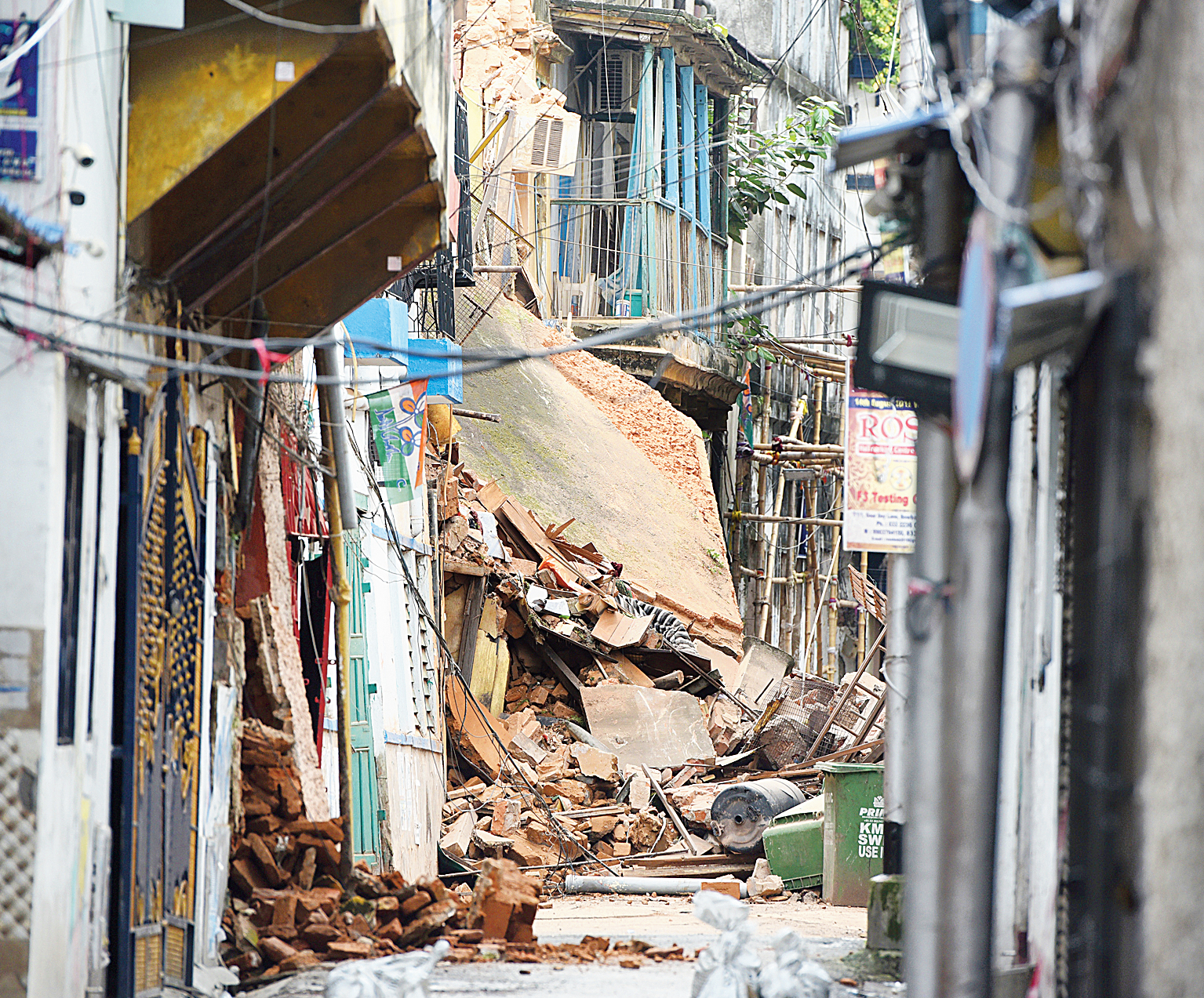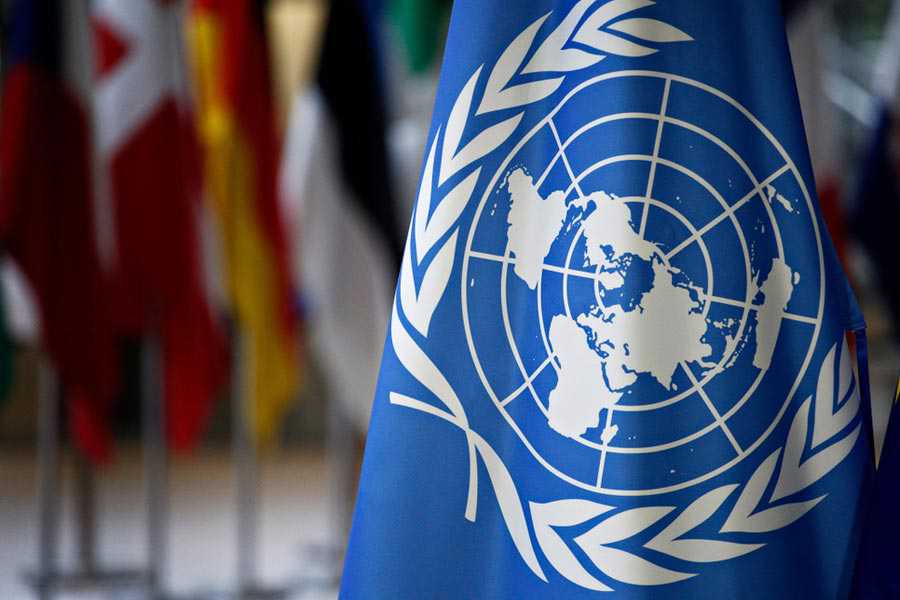The LPG cylinders lying under the debris of the Bowbazar buildings that have collapsed or are crumbing are a key reason why the demolition of the affected structures has been slow, engineers said.
Residents had left behind the cylinders when they hurriedly evacuated their homes after subsidence triggered by East-West Metro work caused damage to the buildings.
“We have to be extremely cautious because of the cylinders. Otherwise, there will be explosions,” said an engineer involved in the removal of the debris, survey of affected buildings and preparation of a roadmap for repairs.
“That (the presence of cylinders) and other safety issues are responsible for the slow progress of the demolition work. Over the past six days, barely one per cent of the work has been done.”
The 16.5km East-West Metro corridor will connect Salt Lake Sector V with Howrah Maidan and run under the Hooghly.
A machine that was boring a East-West tunnel had hit a giant aquifer in Bowbazar on August 31. Water from the aquifer seeped into the tunnel, triggering subsidence and resulting in buildings developing cracks and getting tilted dangerously. A few buildings have collapsed and several are crumbling.
More than 750 people had to be evacuated from 78 houses, all located in Durga Pituri Lane, Syakrapara Lane and Gaur De Lane. Among them are many goldsmiths who use LPG cylinders in their workshops.
“Many of these families have LPG cylinders. We apprehend that there are more than hundred such cylinders, many of those could be under the
debris of collapsed buildings. We have seen many in the damaged houses,” said John Endicott, a British engineer who has worked at over 100 underground railway stations.
He has been flown in from Hong Kong by Kolkata Metro Rail Corporation, the implementing agency of East-West Metro, to supervise crisis management.
An official said there could be at least 200 LPG cylinders in the affected zone, some under the debris and others in houses that have been evacuated.
“We can’t use large payloaders which could have excavated the debris very fast. If there is leakage of LPG, then the excavation work by the machine can trigger a big fire,” said Endicott. “So, the excavation has to be done with extreme caution.”
The engineer pointed out another safety issue.
Although the assessment of the condition of buildings is still on, officials said there could be 20 to 30 buildings that need to be pulled down because they are damaged beyond repair.
“Some of the buildings are four-storey or about 15 metres high. Debris have accumulated underneath these structures. So, if the debris are removed quickly, these buildings can topple, causing accidents and resulting in injuries or deaths,” Endicott said.
So, instead of demolishing the buildings with pay-loaders, the authorities are attempting floor by floor, manual dismantling of the structures.
“Once the top floors are dismantled.... the debris can be removed safely,” he said.
“We are trying to clear the debris and create a working space. Once that is done, we can use metal detectors to locate the cylinders and more equipment to remove the debris and increase the pace of work.”
According to Endicott, the buildings can be divided into three categories — the ones that are damaged beyond repair and need to be pulled down, the ones that need extensive repairs and those that have only developed minor cracks.
There is, however, an element of risk even in those buildings that have suffered less damage.
“Adjacent buildings are tilting and can fall on these structures. So, we have to create buffer zones. The residents of buildings adjacent to the ones that are tilting cannot be brought back immediately,” he said.










